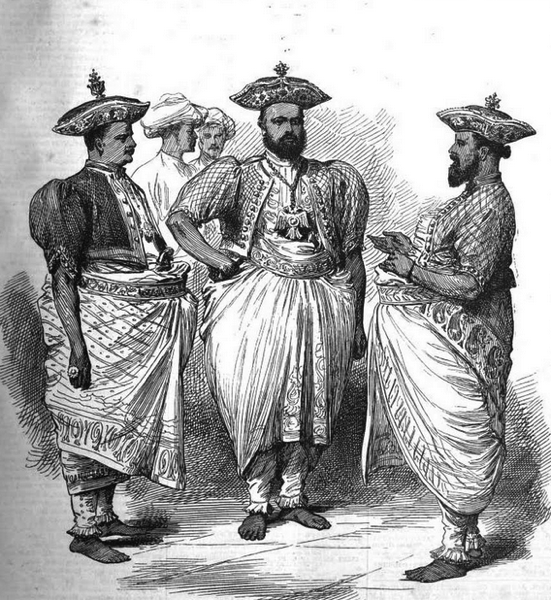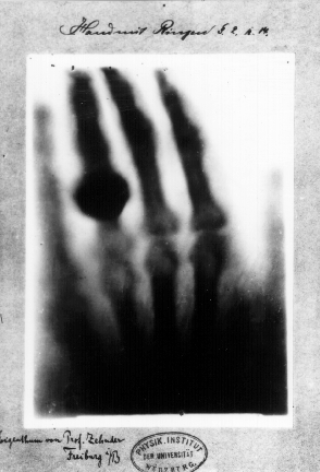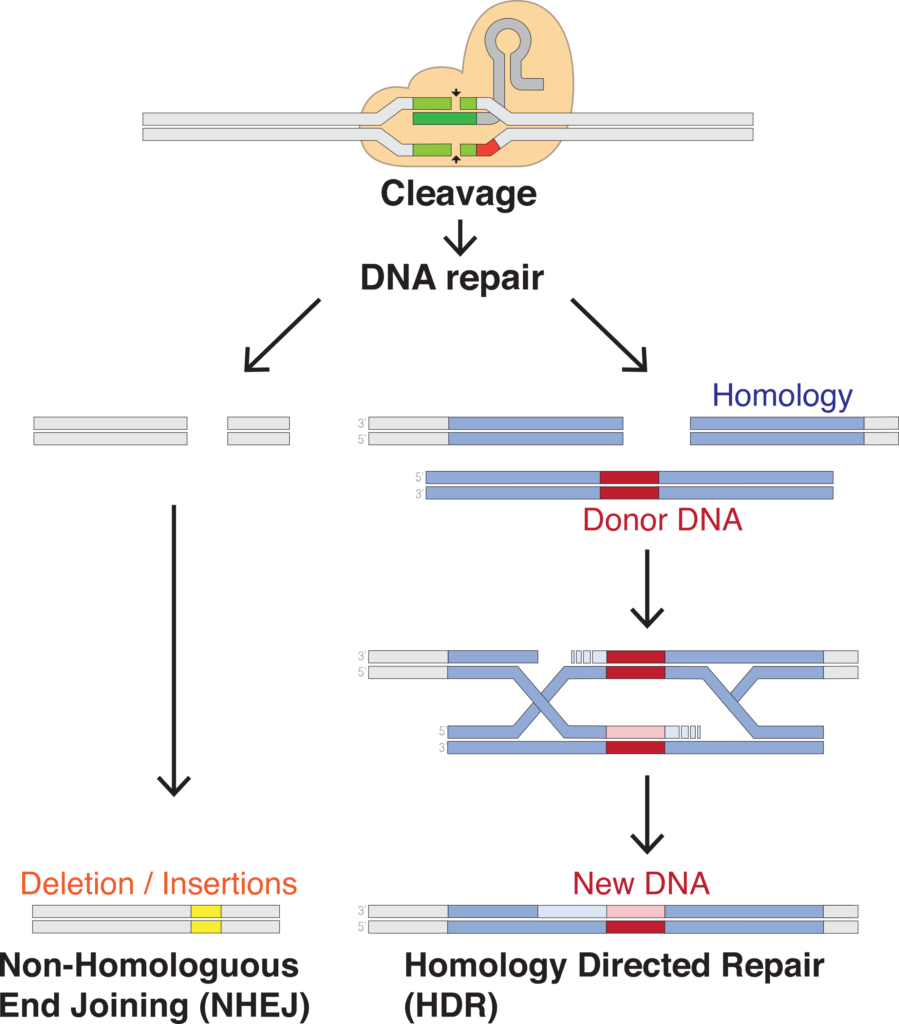Kevin Machel
Serendipity is the product of an interplay between chance and wisdom. It has accompanied us since the dawn of mankind. At first, discoveries were made by mere chance as e.g. the discovery of cooking food with fire. Over the millennia, humans started searching more systematically for answers and solutions. In the last centuries, this systematic search developed into what we know as the scientific method. With that development, the ratio between chance and wisdom changed. Now, in the 21st century, serendipity is being re-discovered. It becomes a new tool in accelerating scientific progress, as young scientists use serendipity as a method to gather answers they never looked for.
The term Serendipity was coined by Horace Walpole in 1754 in the correspondence with his friend Horace Mann about an old Indian fairy tale. He wrote to his friend about the tale of “The Three Princes of Serendip” where the princes discover evidence for a camel theft by mere chance during a stroll. Hence, Walpole used the name of their Kingdom “Serendip”, which is the old name for the region of Ceylon, to describe finding something you were not looking for.1

In the age of enlightenment, it was common for wealthier people to conduct experiments, solve math riddles, or tinker in home labs. Many people in different countries were working simultaneously on similar questions discovering little pieces of big puzzles. On a large scale, this was a systematic approach to making discoveries and progress. On a small scale it were people pursuing their curiosity through conducting various experiments. All these experiments served to piece together the foundations of modern science like e.g. the periodic table of elements. This accounts for engineering as well, take for example the development of the microwave that started with a molten chocolate bar oven or steam- and petrol engines. All these crucial discoveries were made through luck and trial and error. And an environment of trial and error serendipity serves as a key to a treasure chest that no one expected to find.
One other well known example is the discovery of X-rays by Wilhelm Conrad Röntgen. Inspired by earlier experiments, the German physicist was studying the phenomenon accompanying the passage of an electric current through a gas of extremely low pressure in evacuated cathode tubes. These streams of electrons were called cathode rays and, at that time, they were well known, although their nature was still debated. Knocked out from the cathode material the electrons travel in straight lines through the evacuated tube and a high voltage accelerates these light particles to high velocities. Normally they are invisible, but their presence can be detected due to their interaction with the glass wall of the tube, known as fluorescence. When cathode rays strike the glass, the orbital electrons of the glass atoms are excited onto higher energy levels. Then, as the electrons return to their ground states they release energy in the form of light, causing the glass to fluoresce, typically emitting a dim greenish or blueish glow. Later, it was common to paint the inside of the walls with fluorescent chemicals to enhance the glow.
Thus, Röntgen’s idea was to study the resulting luminous effect by experimenting with different fluorescent materials. In essence, Röntgen just wanted to investigate the details of a known phenomena. But his work on cathode rays led him to the discovery of a new and different kind of rays. Preparing for the experiment, Röntgen covered the tube completely with black paper and switched off the lights. He was satisfied that the room was completely dark as he applied the high voltage between the electrodes. That was until he noticed that further back in the room there was a green glowing smoke.
Completely baffled he lit a match and walked towards the green glowing smoke. As he approached the source he realized that a paper plate covered with fluorescent chemical that he planned to use further on in his experiment was emitting the green glow. He could not explain this since the tube was completely covered to exclude all light from fluorescing glass walls, and it was known from the previous experiments that the cathode rays could not escape the tube. During subsequent experiments he found that the fluorescent plate would glow even when it was as far as two meters away from the tube. In addition, he discovered that different materials of different thickness placed in the path of the rays showed various transparency to them when recorded on a photographic plate.

At last, he even asked his wife to put her hand into the path and captured the first ever x-ray image that showed a dark seemingly distorted shadow of her hand. Immediately Röntgen realized that her hand was not distorted as such but that it resembled the skeletal structure of the hand. He concluded that primarily the skeletal structure was able to dim the responsible rays. The nature of this new kind of rays was so strange to him that he named them “X-Rays”. Within one year after the discovery by Röntgen, lots of books and hundreds of articles were produced and the newly discovered rays were utilized in medicine. Never before was a newly discovered phenomenon implemented so fast. And all of that because Röntgen noticed something unexpected. He could have easily missed the dim green glow as maybe others had before him. But chance was on his side that day. In addition, he realized that he saw something real and new that needed to be characterized.3
Since the beginning of the 20th century, a lot has changed in the way we perform science. Nowadays research is executed with much more focus on careful strategic planning of the projects. Still, chance plays a major role in facilitating developments and can sometimes be the spark that incites a revolution in a field. One example that took place not so long ago is very well known for its impact on biology, medicine, and related fields. The discovery in question is of course CRISPR (clustered regularly interspaced short palindromic repeats). This discovery was not made by one group by accident but by a multitude of unrelated researchers. As a fresh Ph.D. student, Francisco Mojica was investigating the influence of salt concentration on the regulation of genes in Haloferax mediterranei bacteria. Incidentally, Mojica noticed that he found certain DNA fragments with similar size and symmetry time and time again. He dubbed them short regularly spaced repeats (SRSRs). Soon, he found similar SRSRs in more than twenty different bacteria, some of them completely unrelated to each other. He quickly realized that he had stumbled across something of fundamental importance. In the following years, Mojica tried to discover genetic patterns matching those of CRISPR to identify their interaction partners. In the beginning, he did not find anything, but with new DNA sequencing technologies emerging, the databases on genetic information grew rapidly. In 2003, Mojica succeeded in finding matches but not in the bacteria itself, but bacteriophages. From these matches, he concluded that CRISPR seemed to play a role in the immune response against the corresponding bacteriophages. We included a chart below to visualize this mechanism of action.
Roughly at the same time, Gilles Vernaud from the French Ministry of Defense found that “CRISPRs may represent a memory of past genetic aggressions” while researching plague bacteria to develop an identification system for bioweapons.5 Although these projects lay the foundation for understanding the CRISPR system and its function, the articles concerning these findings were rejected multiple times because of the lack of novelty for the most part. The last puzzle piece that sent the research topic flying was that Phillipe Horvath was investigating phage-resistant bacteria for Lacto fermentation of Sauerkraut. He discovered the research around the CRISPR system and tried to actively make a strain of bacteria resistant against common phages by exploiting the system and inserting the genetic pattern of the phages into the CRISPR loci. After this experiment was successful it was evident which power CRISPR might hold. It was now possible to create and cultivate CRISPR systems that can edit DNA selectively. None of the three researchers in question ever investigated methods of genetic editing. None of them ever had in mind what possibilities CRISPR would enable for research, they just found some odd results along their path and decided to take the risk to investigate them instead.5

In the wake of harnessing AI and data mining software to dig through enormous amounts of scientific data lays the great potential for increased serendipitous discoveries as in the case of Mojica. Since chance plays at least a lowkey role, in order for someone somewhere to notice the one odd data set, an increase in data processed might lead to more serendipity events. In the case of Mojica it worked out because he knew what he was looking for. However, the use of common data mining software might prohibit serendipitous findings. Most of the commonly used programs require specific training or accurate definition of what to look for. Therefore, the need for “serendipity-sensitive” programs is evident. A question that remains open: are we able to teach programs to recognize the unknown pattern in the data to sort it out for further investigation? In recent years, there have already been successful attempts to train systems to be on the lookout for serendipitous events or at least promote serendipity. The next step in this regard is to broaden the application of these systems to crunch the experimentally obtained numbers for researchers to get serendipity back into the data evaluation of the 21st century.6
Since serendipity seems to be such a crucial factor for the promotion of science, it is of no surprise that a whole new field of serendipity science formed in recent years. One famous example is Pek Van Adel, who strongly promotes the principle of serendipity. Throughout his career, his focus of research included not only medical forensic studies but increasingly the phenomenon of serendipity. In 1999 he and colleagues playfully investigated the question of how it would look if two adults were having sex in an MRI scanner. That question was answered and revealed quite astonishing new insights into the mechanism of action that were not expected generally by gynaecologists and dismissed in previous theories. Furthermore, this investigation won him an Ig-Nobel prize in 2000 to credit his curiosity. He and others were able to describe certain patterns of serendipity in order to increase its probability of occurring. One of these patterns, the “analytical serendipity” can be described as the capability, arising from past experience, to discern a new discovery and understand its significance, as in the example of X-rays. In addition, the “temporal serendipity” explains the synchronistic occurrence of events to play together, as in the example of CRISPR. The third pattern, the “serendipity relations” can be distinguished by its social nature. Every time we meet someone unexpectedly, they coincidentally become a future source of inspiration and sometimes meeting just the right people can lead to a discovery. In reality, though, there is not only one serendipity event but many small events following these patterns that enable us to make the discovery. Knowing that these patterns exist enables us to promote serendipity even in our modern scientific culture. Therefore, serendipitiologists like Pek Van Andel describe virtues that a researcher must embrace in order to cultivate serendipity. With the work of Van Adel and others, centuries of knowledge are condensed and enable today’s scientists to utilize knowledge of the past for the discoveries of tomorrow.1,7,8
From past to current-day experiences we have seen that serendipity is difficult to grasp let alone to control. But there are quite simple things we can do to promote it. From the patterns and virtues defined by Pek Van Andel to more intuitive subtle actions, we can adopt routines to be prepared for the moment serendipity strikes. Sometimes we should take a step back, be brave and investigate that weird signal or that small peculiar detail. We should take the time to wholly understand our results and experiments and not just run from the lab to the desk to start piecing the paper together right away. Ultimately, we do not have infinite time and we have to come to a finish line on a project. But these couple of extra minutes as in the case of X-rays or CRISPR might be worth the shot. Even more important is a network, as evidenced by the case of CRISPR. Only if we can access information easily and at the right time, can ideas form and projects become connected. Finally, it is a question of scope. One can only stay alert so much in one’s research. But if we want to promote serendipity we also have to develop systems or programs that identify
interesting previously unknown patterns in the information that is found by all researchers. With new tools in development on this matter, the future of serendipity seems very bright. Therefore, stay alert and who knows what you might find.
Read more:
| [1] | P. V. Andel, British Journal for the Philosophy of Science, 1994, 45(2), 631-648. https://doi.org/10.1093/bjps/45.2.631 |
| [2] | Illustrated London News, Volume 68,January 15, 1876.https://books.google.de/books?id=Vog-AQAAMAAJ. |
| [3] | R. M. Roberts, Serendipity: Accidental Discoveries in Science, Wiley, 1989. ISBN:9780471602033. |
| [4] | Wilhelm Röntgen – CC BY 4.0, https://upload.wikimedia.org/wikipedia/commons/e/e3/First_medical_X-ray_by_Wilhelm_R%C3%B6ntgen_of_his_wife_Anna_Bertha_Ludwig%27s_hand_-_18951222.gif. |
| [5] | E. S. Lander, Cell, 2015, 164, 18-28. https://doi.org/10.1093/bjps/45.2.631. |
| [6] | P. André, M. C. Schraefel, J. Teevan, S. Dumais, C&C ’09: Proceedings of the seventh ACM conference on Creativity and cognition, 2009, 305-314. https://doi.org/10.1145/1640233.1640279. |
| [7] | W. W. Schultz, P. Van Andel, I. Sabelis, E. Mooyaart, British Medical Journal, 1999, 319(7225), 1596-1600. https://doi.org/10.1136/bmj.319.7225.1596 |
| [8] | S. Copeland.; Synthese, 2019, 196, 2385-2406. https://doi.org/10.1007/s11229-017-1544-3 |